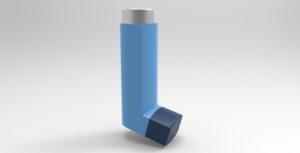While both food allergies and asthma are relatively common among children too few of those responsible for childcare are aware of the links between asthma and allergies and how dangerous these can be. Dr Hilary Jones, on behalf of the charity Haydn’s Wish explains
A round 50% of children up to the age of 18 suffer from one or more type of allergy1. A further. 1.1 million children2 suffer from asthma. If you have a food allergy, you are four times more likely to have asthma. Yet, many nannies and even parents are unaware of this connection. Haydn’s Wish is a charity working to promote a better understanding of the links and educating both children and adults. It was founded by Emma Wileman who lost her son Haydn to an anaphylactic shock due to an unknown peanut allergy.
What is an allergy?
An allergy is the result of your body’s immune system reacting to normally harmless substances, such as pollens, foods and house dust mites. In many people, the body recognises these substances as harmless but for some, their immune system identifies them as a threat and produces an inappropriate response.

Allergic reactions can vary in type and severity. Common reactions include sore throat, runny nose, red or itchy skin, sneezing and wheezing. Food allergies can also cause nausea, vomiting, diarrhoea and constipation.
In rare cases, the allergen can cause anaphylaxis – a severe and potentially fatal reaction, which affects the whole body. The reaction can often occur within minutes of being in contact with an allergen such as food, insect stings and medicines. If a person is having an anaphylactic reaction, they will need urgent medical attention.
What is asthma and what triggers it?
Asthma affects tubes in the lungs called airways, which carry air in and out of the body. If a child has asthma then their airways are almost always red and swollen during an attack. When someone is having an asthma attack, the airways also become narrower, making it harder to breathe. An asthma attack can occur and be exacerbated by various triggers including house dust mites, cigarette smoke or food such as nuts and pollen. Allergies trigger asthma exacerbations in 60-90% of children3.
What do you do in the event of an asthma attack?
The first sign of asthma in children is often a persistent dry cough at night or a wheeze with difficulty breathing. If this is happening for the first time, the child should see a doctor immediately.
If someone has previously been diagnosed with asthma, they may already have a personal or summer action plan. If not, they should take on or two puffs of the reliever inhaler or use a spacer device if they have one.
They should then sit down and take slow steady breaths. If they do not start to feel better they should repeat the dose every two minutes to a total of 10 puffs. If they are still no better they should call for emergency help.
Even if symptoms improve, the advice is to see a doctor or nurse within 24 hours for further treatment if needed, to identify possible trigger factors and to review the personal asthma action plan.
What is Haydn’s Wish – Best to Test?
The campaign, ‘Best To Test’ is designed to improve the diagnosis of allergies and how to treat them, which in turn could save lives. The charity visits schools raising awareness among teachers, parents and children over 12. If you think a child you care for has an allergy or has allergy symptoms it is important to tell the parents they should see their doctor and ask if the child needs an allergy test.
Useful links
1 www.allergyuk.org/why-is-allergy-increasing/why-is-allergy-increasing
2www.asthma.org.uk/asthma-facts-and-statistics
3Kelly WF, et al, Allergic and Environmental Asthma Overview of Asthma 2012.
Available from:
Haydn’s Wish – www.haydns-wish.co.uk
Allergy UK www.allergyuk.org

